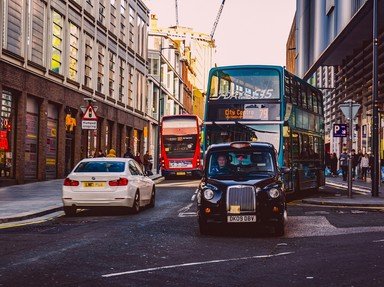Quiz Answer Key and Fun Facts
1. Where should you never park or stop?
2. Where must you never overtake?
3. In adverse weather conditions when should you use your headlights?
4. In a built up area, at what time must you not use your horn?
5. What's the maximum speed limit for a car on Dual carriage-ways?
6. What's the typical stopping distance at 70 mph?
7. It is always the responsibility of the driver to make sure all passengers are wearing seat belts.
8. You must not leave a parked vehicle unattended with the engine running.
9. Green studs mark the edge of the main carriageway at lay-bys and slip roads.
10. When reaching a roundabout in the UK what should you do?
Source: Author
Lord_Digby
This quiz was reviewed by FunTrivia editor
gtho4 before going online.
Any errors found in FunTrivia content are routinely corrected through our feedback system.


